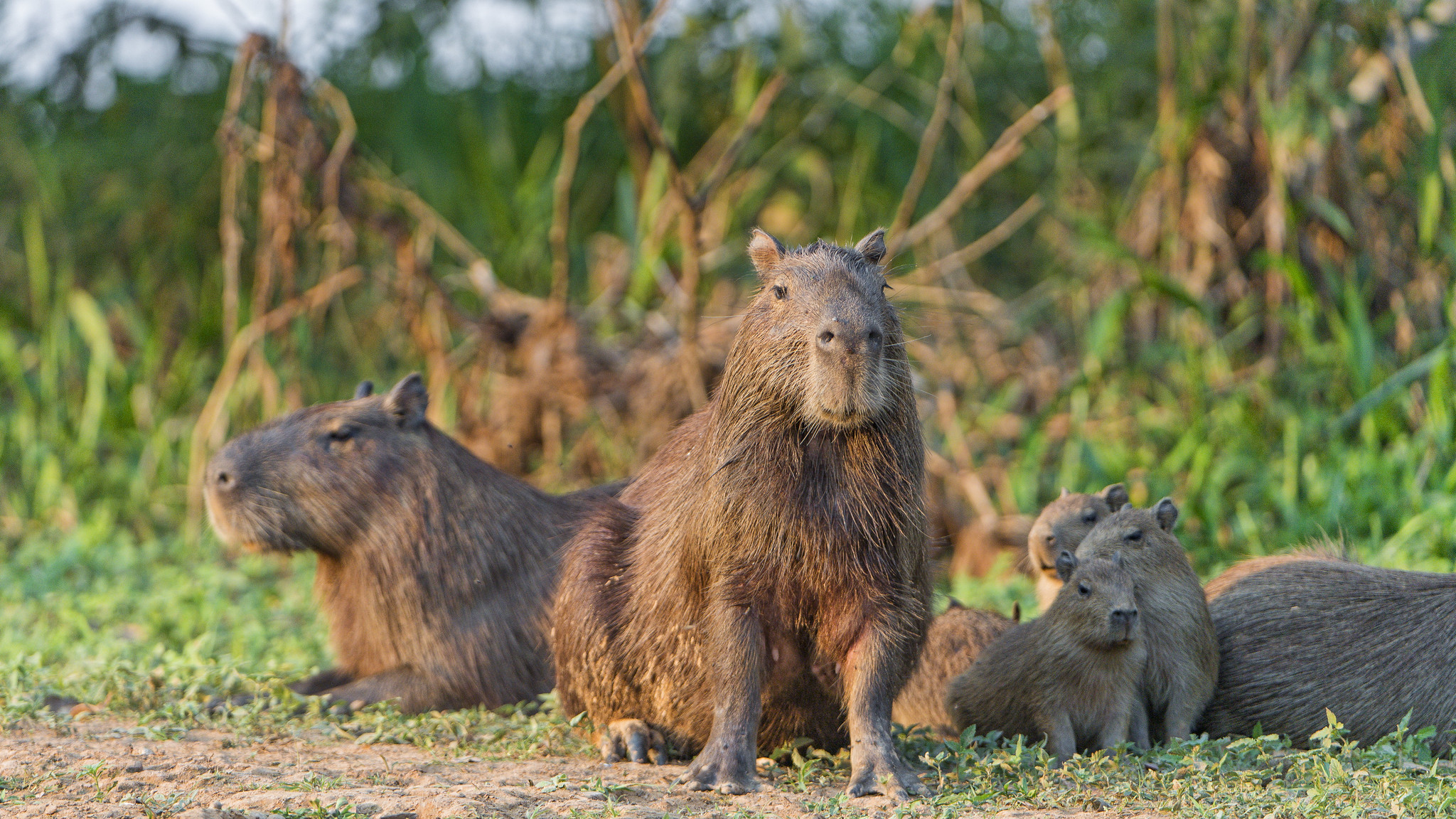Capybara
(Hydrochoerus hydrochaeris)

Forests in South America, throughout the Amazon River basin
We mostly keep to ourselves, relaxing in groups near riverbanks, lakes, or other sources of water where we can dive and splash around!
About me
Did someone say “largest living rodent?” That’s us! Fast and friendly, we’re a pretty common animal in South America. But because our habitat is dwindling and drying up, we sometimes try to sneak into farms, parks, and neighborhoods built on our native wetlands.
I have coarse fur, webbed feet, and dive underwater to get away from predators. Speaking of predators: cats, birds, snakes… why does everything want to eat us? I guess it makes us a pretty important part of the food chain? I’m a bit of a foodie myself, picking out specific grasses, leaves, and reeds to eat depending on the season. And yes… our own poop, too! It helps our gut bacteria digest better, OK?!

Fast Facts: Did you know?
Our eyes, ears, and noses all rest on the upper half of our heads, giving us a haughty, stately appearance. But it’s not just for show. The reason we look like hippos is because, much like our other semi-aquatic friends, we like to submerge ourselves in the water and still be able to see.
We live in complex social groups, communicating with all of our vocal range by barking, whistling, grunting, chattering, laughing… and scent-spreading! And our young capybaras are close-knit and cooperatively parented.
Just because we’re big doesn’t mean we’re slow — we can run AND swim at speeds up to 20 mph — that’s faster than most of you! And we jump way higher than you think too… See you at the Olympics!
The rainforests of the Amazon, Congo, and Indonesia are our last best line of defense against the biodiversity and climate crisis. But 17 corporations are making massive profits by driving their destruction and the violation of human rights. That has to end NOW.
Why I want to Keep Forests Standing
As grazing herbivores, we play a pretty important part in keeping the ecosystem balanced. Big disturbances can cause our population to spiral in either direction. For now, while we’re nowhere near endangered, we want to keep our distance from human infrastructure. Constant development on our territory means that groups of us get into cultivated areas, eating melons and grains. We even took over a neighborhood one time!



 Forests in South America, throughout the Amazon River basin
Forests in South America, throughout the Amazon River basin










